Mount Kilimanjaro Climbing Packing List
Ensure you have all the necessary gear for a successful Mount Kilimanjaro climb with our comprehensive packing list. Be prepared for the adventure of a lifetime.
Mount Kilimanjaro Climbing Packing List
If Kilimanjaro is not your first mountaineering experience of summits above 5,000 m, then you probably already have most of the equipment needed. Yet, for many, Kilimanjaro is their first big climb. Therefore, you should seriously consider hiring some of the items on the spot as not to spend a fortune on equipment.
Buying the whole Kilimnajro kit is likely to cost you more than a thousand dollars, increasing the overall budget of your adventure. Hiring everything that you need for the hike will cost around USD 250-300. If Kilimanjaro is your once-in-a-lifetime venture and you are not sure whether you are going to continue climb, then hiring will be a cost-saving solution.
If Mount Kilimanjaro is only the first hiking adventure on your bucket list and you plan to explore other mountains, then buying your own gear is not a bad idea. Remember, however, to choose an appropriate luggage tariff when buying air tickets, as the whole kit is likely to weigh 15-17 kg. Therefore, even if you are arriving with your own gear, hiring some of the heaviest and most cumbersome items (such as a sleeping bag, down jacket or trekking poles) may be a good idea, especially if you have a trip to Zanzibar or a safari after the hike. Most local airlines operating Zanzibar flights have a 15 kg luggage limit, which will surely not be enough to pack all your hiking and usual travel luggage.
We have compiled our packing guide so that even a complete novice could use it as a reference, though some recommendations might be obvious to seasoned mountain climbers:
You can hire the required gear on the spot when you arrive in Tanzania.
Those who don’t want to bring the whole bulk of their climbing equipment to Tanzania can always hire it on the spot from our rental shop. And it’s more pocket-friendly to hire from us than to buy new. For first-time climbers or anyone who doesn’t have their own climbing gear, renting is a much more affordable choice than investing in top-quality gear you may only use one time. We are the only company in the region to provide our clients with gear from such brands as The North Face, Marmot and Red Fox straight from our own store, the biggest in the Kilimanjaro region. All equipment is clean and in perfect condition as we renew our stock twice a year.
Avoid buying the cheapest gear.
There’s no need to spend a fortune on buying branded clothes and footwear, and yet low quality items should not be an option either, no matter how attractive the price. After all, it is your safety and comfort at stake. On today’s market you can find plenty of high-quality alternatives at affordable prices.
On Kilimanjaro you will be climbing through four different climate zones (rainforest, moorland, alpine meadows, and Arctic desert). At the lower altitude of tropical rainforest, the weather is mostly humid and hot, while in the summit zone it is snowy, windy and frosty. In addition, while the temperature is usually high during the day, it can drop to the freezing point at night.You should be properly prepared for all of these conditions.
A warm jacket is used in camps to keep you warm during chilly evenings and for the summiting part of your trip. It is an absolutely necessary element of your kit.
A warm jacket should not be too heavy or too light and it should be comfortable to wear at -15°C / (5°F).
Make sure that your warm jacket is a hooded one.

Another important thing to bear in mind is the waterproof capacity of a down jacket. Rain and snow are not unusual on Mount Kilimanjaro, therefore, we recommend choosing warm jackets with a water-resistant outer material to protect you against minor precipitation. If heavy rain or snow starts, you’ll need a special rain jacket to provide extra cover.
Hard shell rain jacket will likely be necessary from the first day of your trip (especially on Lemosho 7-day program, where you’ll be starting from 3,500 m/11,500 f), and should always be packed into your backpack for easy access.
This jacket is meant to protect you against wind and drizzly rain before you reach the summit camp. On most of the Kilimanjaro days it would be your third layer, after thermal underwear and a fleece jacket.
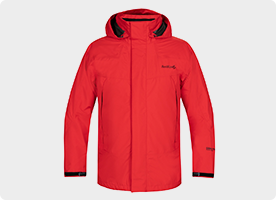
Trekking pants of good quality are usually enough for a Kilimanjaro expedition. If you prefer hiking in shorts, taking a pair of trousers is nevertheless needed for the higher elevation parts of Kilimanjaro and chilly evenings in the camps.

Membrane pants are needed for your Kilimanjaro adventure, and they are especially useful during the rainy season. When worn together with the trekking pants, they provide excellent protection against winds and rains, making your overall experience better.

Warm trousers or ski pants are another must-have item on your packing list. They are needed for the summiting part of your hike, when the weather is particularly cold. These trousers should be water resistant, lined with fleece on the inside for warmth and covered with good hard shell insulation for protection against wind and rain. Ideally, you should be able to feel comfortable wearing these pants in temperatures under -15 CO/5°F. If you are not quite used to cold temperatures, you will also be especially happy to wear warm pants in the higher camps of Kilimanjaro.

You will need 6-8 pairs of underwear for your Kilimanjaro adventure. In addition to that, having 2-3 pairs of thermal underwear (base layer) is necessary for this trek – you’ll be wearing the first pair on your usual days, and the second one on the summit night. Also, sleeping in thermal underwear is more comfortable than without it.
The first set can be made of light synthetic fabric so that it dries faster. The one used for the summiting should contain warmer, more natural components, e.g. wool.
Any branded thermal underwear will be perfectly suitable for your Kilimanjaro adventure.As far as shirts for Kilimanjaro expeditions are concerned, having 3-4 short-sleeved and 2 two long-sleeved shirts is necessary. Avoid cotton, as it is bad for wicking. Fabric should be light and ‘breathable’. Shirts made of the mixture of polyester and spandex or nylon are excellent.
Your day-pack will carry your daily essentials, such as: sunglasses, sunscreen, rain poncho, flashlight, flask with water and snacks. It is also the right place to put your gadgets, for example: your camera and smartphone.
Your daypack should be as light as possible. Leave heavier alternatives for other treks. Moreover, make sure that your daypack fits your back comfortably. We recommend testing it on a smaller hike before Kilimanjaro to make sure it is suitable and comfortable for this adventure.
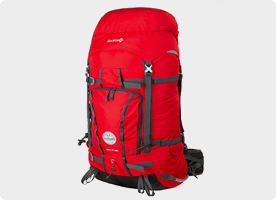
A duffle bag is where you will keep most of your Kilimanjaro clothes and gear, such as hiking boots (unless you’ve decided to put them on straight from the first day), sleeping bag and more. A porter will be carrying it all the time. Typically, porters carry duffle bags on their heads, making it necessary to choose soft models for their comfort. The total distance covered by a porter with your duffle on his head will be (depending on the route) around 40-50 km.
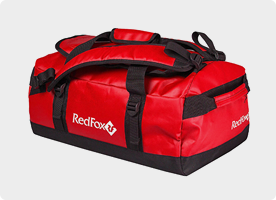
Since rains are not rare on Kilimanjaro, taking a dry bag is a good idea. Putting it inside your duffle bag or backpack can help you keep all your Kilimanjaro gear dry and fit for use. If you decide to take one, make sure that it is large enough to fit a sleeping bag and all other gear.

A water flask is an absolute must. Unlike some poor-quality hydration bladders, it will not freeze at night. You are required to drink at least 3-4 liters of water every day, so a flask is one of the key items for this trip.
You should have 1-2 water flasks (one liter each) for your Kilimanjaro trip.
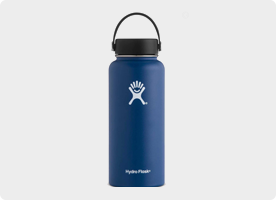
Apart from having a water flask, it is also recommended to have a thermos for hot tea/coffee. Though the guides normally carry one thermos each for the hikers to have a hot drink on the way, taking your own means extra supply, which will be never superfluous on Kilimanjaro. More tea or coffee means more energy, which you will surely need.
Hydration bladder (or “camel bag”) is highly recommended for this trip.If your day-pack is compatible with a hydration bladder, having one will surely add comfort to your trek. You should be very cautious and choose only high-quality models. Make sure that the pipe is insulated, otherwise, it might freeze on the summit night.

High-quality hydration bladders retail at USD 30 and more, but this is a good investment. 1.5 and 2-liter variations will be perfect for your trip.
A highly recommended item that makes it comfortable to get all of your gear sorted inside a duffle bag. Also, using such organizers is helpful for keeping dirty and wet clothes apart from the clean ones.

Choosing appropriate hiking boots is probably of utmost importance. There are many options on the market, and sometimes it’s hard to find the right one.

Ideally, your hiking boots should meet the following criteria:
- Boots should have good ankle support. To avoid getting injured make sure to choose a robust model with sufficient ankle support.
- Boots should be of medium weight. Avoid buying boots that feel very heavy, it will affect your comfort and make your feet quickly tired.
Of course, your boots should be waterproof to keep your feet dry all the way up to the top. It is especially important in the summit area if you climb Kilimanjaro during the rainy season. Wearing high-quality trekking socks will provide extra protection, so it is always recommended to have a pair.
Preferably, laces should get fixed to the speed hooks for better comfort and protection. It is critically important to break in your boots before the start of your Kilimanjaro trip. Taking a pair of brand new boots will cause discomfort, sore soles and calluses. Therefore, it is highly recommended for you to wear your boots for about 5-6 days before the start of the expedition. You should take at least one long hike to get them ready.
On some routes the first days of your hike won’t be very steep, making it possible to use simple trekking sneakers instead of boots. On the following days, after arriving at your camp, you’ll probably want to take off your hiking boots and let your feet rest. That’s when sneakers might come in handy. They’ll be perfect for exploring the camp surroundings and to move between your tent and dining tents.

Trekking socks are a must on hikes like this. Do not pack cotton socks, as they will retain sweat and give you blisters.In contrast, woolen socks are a good option for Kilimanjaro – they will ensure fast and effective. wicking. A brand to choose is Bridgedale.

Thermal socks are optional, but highly recommended, especially for climbs during the summer months. There are a lot of brands available on the market. The ones with flat seams, not made of cotton, will suit perfectly! Wool is a great alternative.

The use of gaiters on Kilimanjaro is not mandatory, but during the rainy season they are absolutely indispensable to prevent mud, snow or pebbles from getting inside the boots.
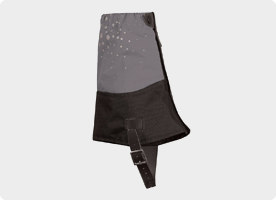
Hikers often think that gaiters are of little value. And yet, they do help to keep your trekking pants and boots clean during the trek, making your clothing more pleasant to put on. Also, the gaiters help to protect your more expensive membrane and trekking pants from the edgy rocks which are ubiquitous on Kilimanjaro.
A sun hat is a must have on your packing list. Ideally, it should also have a neck cover. This headgear will protect your face from sunburns and overheating.

Taking a beanie is necessary for this trip.
At higher elevation you’ll start feeling cold, so in order to keep your head and ears warm you will need a good beanie. It should be warm enough for the low temperatures and snowy conditions of the summit area.

Balaclava is a handy solution for hikers who are particularly susceptible to cold temperatures. A woolen balaclava will protect your chin, nose, cheeks and forehead from wind on the summit night. It is unlikely that you will be using it anywhere else.

Many climbers find neck warmers very useful as they provide good protection to your neck and face if it gets very cold. It’s also a good solution against dust.
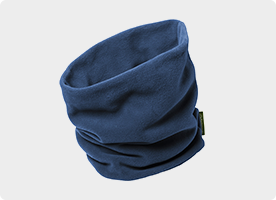
When it comes to sunglasses, there are some key points to pay attention to. Firstly, sunglasses should provide good UV protection. At the elevation of 6,000 m above the sea level UV radiation is much higher than at sea level.
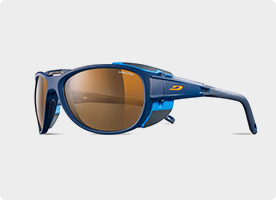
Secondly, when choosing sunglasses you should remember that snow in the summit area reflects light, thus putting extra strain on your eyes. Once near the summit, you should put your sunglasses on even if it is cloudy. Otherwise, you might develop a condition known as snow-blindness. It is very dangerous and may cause permanent damage to your vision. Thus, make sure to choose a high-quality, mountain model with 3 or, better, 4-level of UV protection.
You can not hike Mount Kilimanjaro without a headlamp.Firstly, you’ll need it for moving around the camp after sunset when finding your tent can become quite a task. Besides, if you decide to go to the bathroom at night without a headlamp on you could stumble upon the tent ropes.

Trekking poles are a highly recommended item on your Kilimanjaro packing list, not only because it is a matter of comfort, but because of health concerns.

High-altitude trekking is a strenuous activity that puts great strain on your knees and joints. Average daily hiking leg on Mt Kilimanjaro is 7-10 km which takes 4-8 hours to complete. The terrain is rugged, and, at some points of the trek, rocky. This is where the trekking poles will help you to keep balance, adding two extra supporting points. The hikers also say that the trekking poles are very helpful on the summit night, especially when fatigue takes over them.
That is why some people who do not use trekking poles complain about sore legs during and after the trip.
Good trekking poles will minimize the impact of a lengthy hike on joints, since part of your weight will be moved upon your hands and back, relieving your knees and other joints from extra stress.
While deciding on the trekking poles for your Kilimanjaro hike pay attention to the following:
- Ideally, the weight of your trekking poles should be around 400 g – not too heavy and not too light. Durability also matters – they should be able to endure lengthy hikes.
- As for materials, aluminium is the most optimal option that will make the poles durable. Also, make sure to check the grip materials – in a high-quality pair of poles grips are made of cork or foam. Cork is always a better option, as it feels more comfortable in the palm and doesn’t damage the palm skin.
- Also, remember that the trekking poles should match your height. Apart from adjustable models, there are special models for tall people and for kids.
Black Diamond is known to have the finest collection of trekking poles for hiking.
Lightweight gloves are meant to keep your hands warm starting from the second day of your expedition. Most hikers wear them till the summit camp and then put on their outer gloves. Inner gloves should be made of good-quality materials, the best options being wool, polartec or synthetics. Avoid buying cotton gloves – they are not suitable for Kilimanjaro because of their poor wicking capacity.

You will also need warm gloves or mittens for the summit night. They should be warm and waterproof, while comfortable to use. Mittens are better – the summit usually takes around eight hours, and all the time you will be holding trekking poles in your hands. Because of that, it is imperative to keep them warm at -15C/ 5F (lowest temperature in the summit zone).
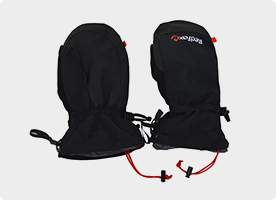
No matter which season you are climbing Mt Kilimanjaro, a sleeping bag will be necessary in any camp and on all routes. Though some may think that it is warm in huts on the Marangu route, the fact is that they are not heated, making it your responsibility to keep warm at night.

Your sleeping bag should be warm. To begin with, your sleeping has three temperature levels.
“Comfort level” means the temperature at which you can sleep in your sleeping bag comfortably with only your thermal underwear on.
“Limit level” stands for the temperature when you can use your sleeping bag while wearing some layers of extra clothes. Sleeping bags should not be used in conditions beyond that temperature limit.
“Extreme level” means the temperature when a sleeping bag can be used as an emergency measure to save a climber from hypothermia until the emergency services arrive.
A sleeping bag liner will add extra warmth on the final days of your climb. Mummy-shaped liners are better than rectangular ones. Either a fleece or an insulated liner will be great for your Kilimanjaro hike.
A good liner can add from 3 to 8°C to your sleeping bag comfort level, which enables you to take your own sleeping bag if it does not match the -10°C comfort level requirement.
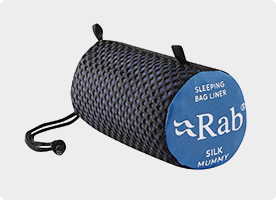
An inflatable pillow will be of great use for those who like reading in a tent. At the same time, however, you may put your backpack or some clothes under your head to make an improvised pillow.
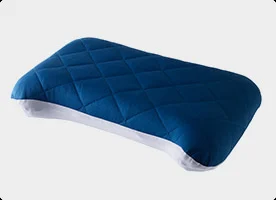
Wet wipes will help maintain personal hygiene if you decided to climb Kilimanjaro without hiring a personal portable shower. Take two packs – put a small one into your daypack to use on the way, and a larger one will go to the duffel bag to be used for the evening hygiene.
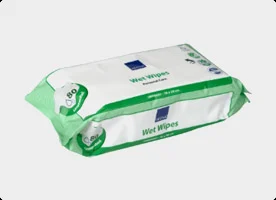
Don’t forget about suncream. Without it the open parts of your hands and face will easily get sunburnt.
Some of the gadgets that will be useful on your Kilimanjaro trip are:
Camera
The scenery opening from Mt Kilimanjaro is truly spectacular! Taking great pictures is one of the main reasons people sign up for this trip. You may take a smartphone with a power bank or a Go-Pro camera with spare batteries to capture the most fantastic moments of your adventure.
Power banks
As said above, If you are taking any gadgets with you, taking a power bank is a must. There are no power outlets on Kilimanjaro and it is the only way to keep your smartphone, e-reader or other devices charged.
E-book
For those who like to read before going to sleep, it is a must-have item on the packing list.
Mp3 Player
This is what will make your Kilimanjaro adventure truly great, especially on the summit night. Your favorite songs will certainly keep up your spirits and make the moments on the top of Africa even more wonderful.
Ask Our Expert





